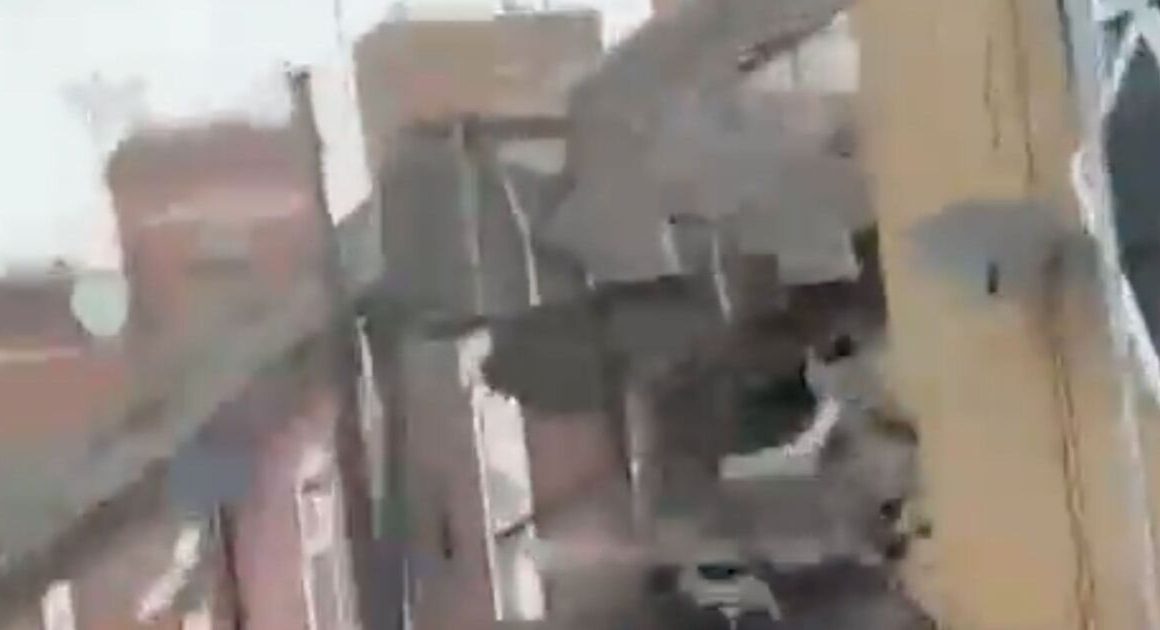The U.S. Supreme Court on Friday rejected an emergency appeal from Republicans that could have led to thousands of provisional ballots not being counted in Pennsylvania, as the presidential campaigns vie in the final days before the election in the country’s biggest battleground state.
The justices left in place a state Supreme Court ruling that election officials must count provisional ballots cast by voters whose mail-in ballots were rejected.
The ruling is a victory for voting rights advocates, who had sought to force counties — primarily Republican-controlled counties — to let voters cast a provisional ballot on Tuesday, Election Day, if their mail-in ballot was to be rejected for a garden-variety error.
While the Supreme Court action was a setback for Republicans, the party separately claimed victory in a decision by Pennsylvania’s Supreme Court. That court rejected a last-ditch effort by voting rights advocates to ensure that mail-in ballots that lack an accurate, handwritten date on the exterior envelope will still count in this year’s presidential election.
The rulings are the latest in four years of litigation over voting by mail in Pennsylvania, where every vote truly counts in presidential races. Republicans have sought in dozens of court cases to push the strictest possible interpretation for throwing out mail-in ballots, which are predominantly cast by Democrats.
Chuck Todd, chief political analyst for NBC News and former moderator of Meet The Press, explains why he’s watching for what happens with U.S. voters who decide on election day — and what he expects in the days after the Nov. 5 vote.
Taken together, Friday’s near-simultaneous rulings will ensure a heavy emphasis on helping thousands of people vote provisionally on Election Day if their mail-in ballot was rejected — and potentially more litigation.
As of Thursday, about 9,000 ballots out of more than 1.6 million returned have arrived at election offices around Pennsylvania lacking a secrecy envelope, a signature or a handwritten date, according to state records.
Key battleground state
Pennsylvania is the biggest presidential election battleground this year, with 19 electoral votes, and is expected to play an outsized role in deciding the election between Republican nominee Donald Trump and Democratic nominee Kamala Harris.
It was decided by tens of thousands of votes in 2016, when Trump won it, and again in 2020, when the state was won by Democrat Joe Biden.

A voting rights lawyer in Pennsylvania who helped bring both cases said it is almost certain that another case over undated ballots will be back before the state Supreme Court within days after the presidential election if it is close.
“This is going to be raised again after the election, especially if it’s a close election,” Witold Walczak, legal director of the American Civil Liberties Union of Pennsylvania, said in an interview.
In its unsigned, two-page order, the state’s highest court put a lower court ruling on hold that would have required counties to count the ballots. The court said the case won’t apply to the presidential election being decided next week, but it held out the possibility that it would still rule on the case at a later time.
The rulings came as voters had their last chance on Friday to apply for a mail-in ballot in a bellwether suburban Philadelphia county, while a county clear across the state gave voters who didn’t receive their ballot in the mail another chance to get one.
Ruling on replacement ballots
A judge in Erie County, in Pennsylvania’s northwestern corner, ruled on Friday in a lawsuit brought by the Democratic Party that about 15,000 people who applied for a mail-in ballot, but didn’t receive it, may go to the county elections office and get a replacement through Monday.
The deadline to apply for a mail-in ballot has passed in Pennsylvania. But the judge’s ruling means that Erie County’s elections office will be open every day through Monday for voters to go in, cancel the mail-in ballot they didn’t receive in the mail and get another one over the counter.
In suburban Philadelphia’s Bucks County, a court set a deadline of 5 p.m. on Friday for voters there to apply for and receive a mail-in ballot after a judge ordered a three-day extension in response to a Trump campaign lawsuit that accused the county of breaking the law by turning voters from election offices that had struggled to keep up with demand.
Lines outside the county’s elections office in Doylestown, Pa., were long throughout the day — snaking down the sidewalk — with the process taking about two hours by Friday afternoon.
Nakesha McGuirk, 44, sized up the line and said: “I did not expect the line to be this long. But I’m going to stick it out.”
McGuirk, a Harris supporter, faces a long work commute next week and worried about her ability to make it to the polls on Tuesday. “I figured that rather than run into the risk of not getting home in time to go and vote, that it would be better to just do it this way early,” she said.
Patrick Lonieski, a Trump supporter, also found it more convenient with his work schedule to vote on Friday in a county he called “pivotal” to the outcome.
“I just want to make sure I get my ballot in and it’s counted,” said Lonieski, 62, who was joined by his 18-year-old son, who was voting for the first time.
The line steadily dwindled as the 5 p.m. deadline approached.
One last straggler broke into a run to make it by the deadline as election workers cheerfully counted down the seconds. “Let’s go! Hurry up! You can do it!” a bystander yelled. People broke into applause as she walked through the door — just in time.












